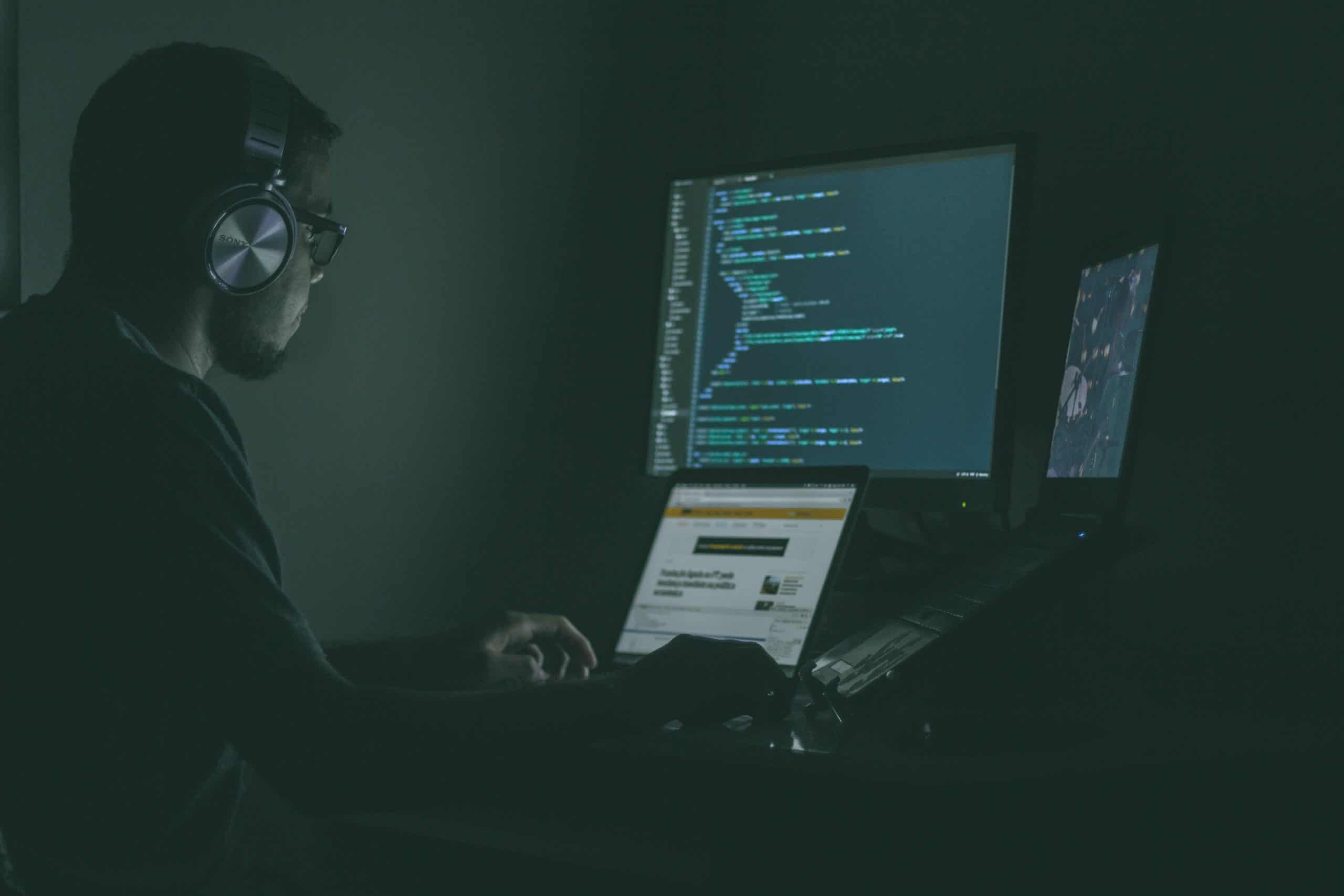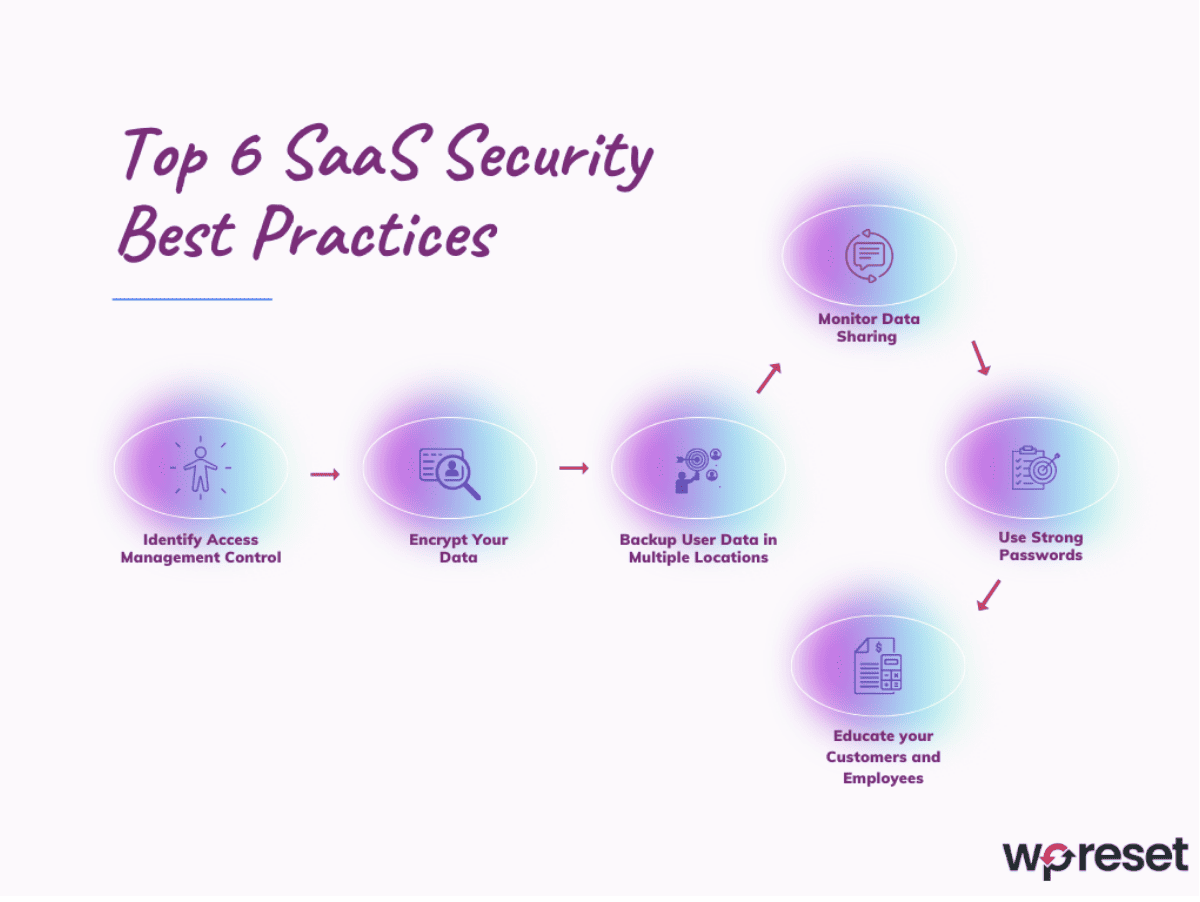In today’s digital era, we use many online applications and services, commonly known as Software as a Service (SaaS). A few examples of SaaS services include BigCommerce, Google Workspace, Salesforce, and Dropbox. Although these services have made our lives easier, they hold our valuable data. If not managed properly, these SaaS services can act as a potential gateway for data breaches.
This is where SaaS security best practices come in. With some simple yet effective practices, one can easily protect one’s data.
In this guide, we will uncover the top 6 SaaS Security best practices. Moreover, we will also discuss the three necessary layers of SaaS security. By knowing all this, you can effectively protect your valuable data. So, take advantage of this informative guide and start reading!
What Is SaaS Security?
SaaS Security, also known as Software as a Service Security, is an important component of protecting data and applications that are hosted in Cloud-based SaaS services. SaaS like Google Workspace, Dropbox, or Salesforce offers invaluable ease, but they store our important data. Protecting this data from data breaches is really important, and SaaS Security is all about protecting this data.
In SaaS Security, we implement some best measures and practices to protect data and maintain privacy. It is like a strong protective shield that protects user data from misuse.
Three Important Layers of SaaS Security
When you think of SaaS Security, it is like a big and strong building with three layers to keep everything safe inside. Likewise, SaaS Security has three protective layers. These layers work together to keep your data safe and secure. Here are these three layers:

-
Infrastructure
Infrastructure is the foundation of SaaS Security. It is the software used in the lower part of the technology stack. It is all about where your SaaS services are hosted. A strong and protective infrastructure means you have a strong security foundation. The infrastructure primarily includes Data Centres and server security.
-
Network
The next layer is Network security. It is the most sensitive and vulnerable to security threats. This layer basically ensures the safety of connections when people interact with your product. Securing this layer is really important to protect your sensitive data. For this, make sure to have automated procedures for detecting, recording, and promptly notifying you about any potential problems.
-
Application and Software
The third and last layer of SaaS Security is Application and Software security. This layer works at both the client and server sides. We use third-party applications and software for storing and sharing data. So, SaaS Security focuses on this layer whenever you are collaborating with other organizations.
Top 6 SaaS Security Best Practices

Implementing SaaS Security best practices is important to keep user data secure and protected. Here are the top 6 SaaS Security practices that can help you keep your data protected. Let’s have a look in detail:
-
Identify Access Management Control
The first SaaS Security best practice is to identify access and management control. This is all about making policies and measures to ensure only the right person has access to your data. In this step, several programs are implicated to know “Who” and “When” someone accessed your data. By limiting access to data, you can significantly reduce the risk of data breaches. For implementing IAM controls, follow these guidelines:
- Utilizing a privileged access management solution can further enhance security by ensuring that only authorized users have access to sensitive data, reducing the risk of internal threats.
- Establish user authentication protocols.
- Set up user access controls.
- Implement role-based access control.
- Create a secure password.
- Create audit trails.
- Regularly update security settings.
-
Encrypt Your Data
According to Niket Sharma, Co-founder of My Comparision Guide, a top-rated marketing blog, “The next important SaaS Security practice is data encryption. Encryption converts the data into a code that can only be read with a key. By encrypting both stored and sent data, you add a strong layer of protection”.
SaaS applications mostly use TLS or Transport Layer Security to protect and secure data in transit. TLS is a strong security protocol that encrypts your data over the internet.
Data at rest encryption is also important to secure your data when it is stored in databases or servers. You can use different data encryption algorithms to secure your data in SaaS applications.
Another great option to get secure encryption is using a VPN. Try to choose one that fits your needs best. For example, if you use a Mac, pick a service that works well with macOS, and if your choice of OS is Windows, then choose a VPN for Windows.
-
Backup User Data in Multiple Locations
Another SaaS Security best practice is regularly backing up your data in multiple locations. By regularly backing up your data, you can protect your data from accidental deletion and any cyberattack. For this, automated backup systems can also be used. These systems ensure that backups are performed regularly to prevent and protect data.
-
Monitor Data Sharing
Keeping an eye on data sharing within and outside your organization is important. It will help you protect your data from unauthorized data sharing and unusual activity. For this, you can use real-time monitoring and auditing of data-sharing activities with your SaaS applications. It will help you access unauthorized access and data breaches. You can also set notifications for unusual data-sharing patterns. It can also help you signal potential security threats.
-
Use Strong Passwords
Using a strong and unique password is one of the best SaaS security practices. Use a password with uppercase, lowercase letters, numbers, and special characters. Moreover, it should be long and not include easily guessable information like birthdays and names. Also, implement a two-step verification, which requires an extra verification in addition to a password. It will add a secondary layer of security to keep your data secure and protected. Therefore, choosing a strong password or a robust password manager is crucial in enhancing your SaaS security.
-
Educate your Customers and Employees
Most of the cybersecurity threats arise from human errors. So, education is an important practice in protecting user data. For this, one should regularly train and educate the customers and employees about the SaaS Security best practices. This education should include recognizing phishing attempts, avoiding suspicious downloads, and updating software. Keep in mind that a well-informed user is the best defense against cyber threats.
Final Words!
Businesses must apply SaaS security best practices to ensure user data is protected from potential threats. As more cyber crimes are reported, organizations must safeguard their software and apps. Backing up user information in multiple locations while monitoring data sharing and educating customers and employees can help create a multi-layered defense against cyber threats through encrypting data and using strong passwords after identifying access control management.